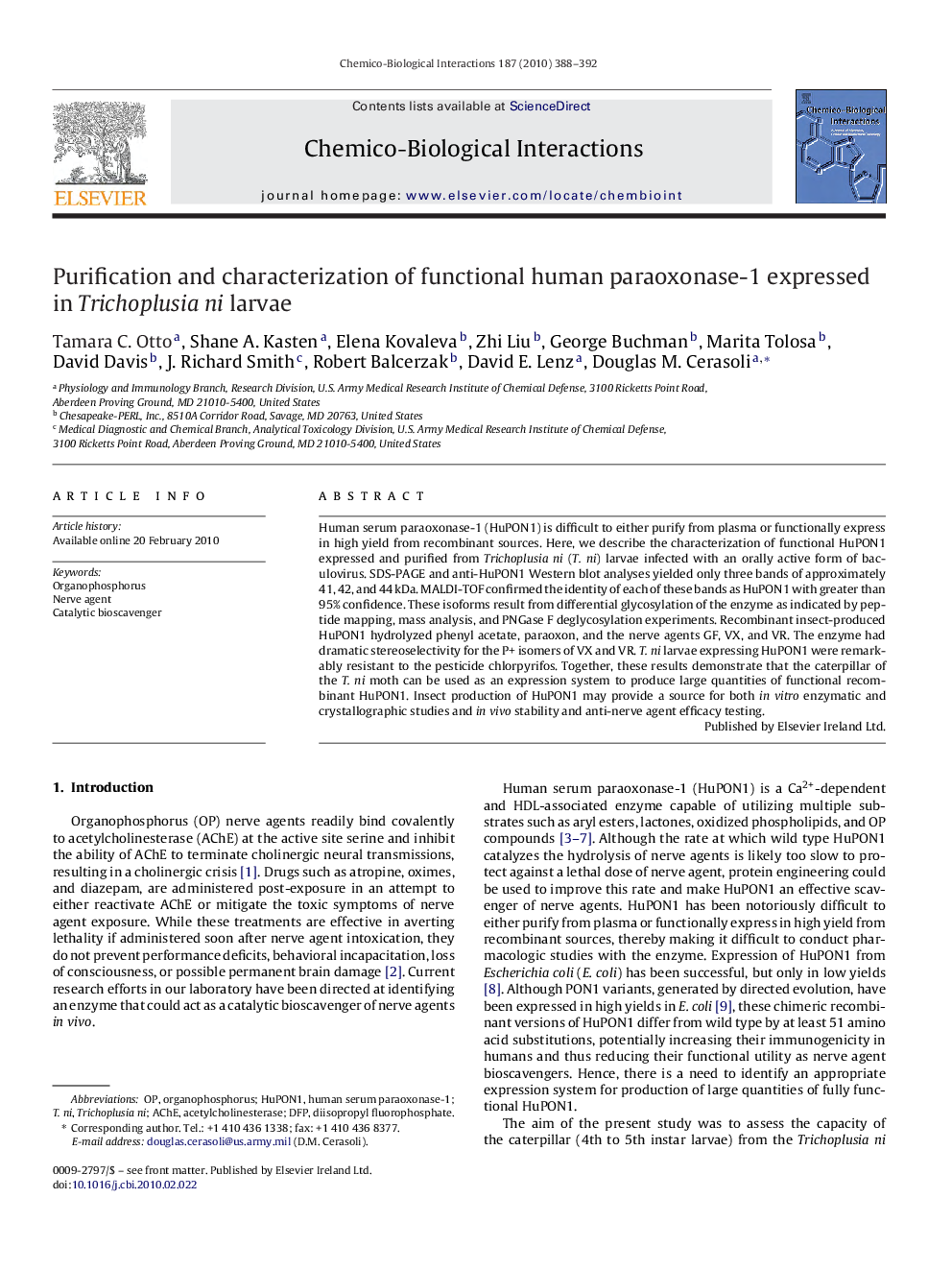| Article ID | Journal | Published Year | Pages | File Type |
|---|---|---|---|---|
| 2581814 | Chemico-Biological Interactions | 2010 | 5 Pages |
Human serum paraoxonase-1 (HuPON1) is difficult to either purify from plasma or functionally express in high yield from recombinant sources. Here, we describe the characterization of functional HuPON1 expressed and purified from Trichoplusia ni (T. ni) larvae infected with an orally active form of baculovirus. SDS-PAGE and anti-HuPON1 Western blot analyses yielded only three bands of approximately 41, 42, and 44 kDa. MALDI-TOF confirmed the identity of each of these bands as HuPON1 with greater than 95% confidence. These isoforms result from differential glycosylation of the enzyme as indicated by peptide mapping, mass analysis, and PNGase F deglycosylation experiments. Recombinant insect-produced HuPON1 hydrolyzed phenyl acetate, paraoxon, and the nerve agents GF, VX, and VR. The enzyme had dramatic stereoselectivity for the P+ isomers of VX and VR. T. ni larvae expressing HuPON1 were remarkably resistant to the pesticide chlorpyrifos. Together, these results demonstrate that the caterpillar of the T. ni moth can be used as an expression system to produce large quantities of functional recombinant HuPON1. Insect production of HuPON1 may provide a source for both in vitro enzymatic and crystallographic studies and in vivo stability and anti-nerve agent efficacy testing.
